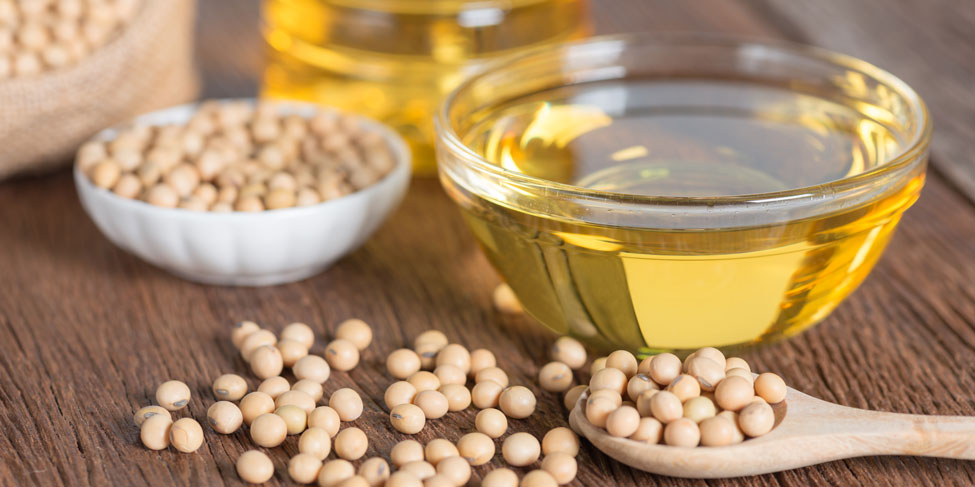Don’t Skip Out on Seed Oils
June 19, 2025
By Brock Johnston, Iowa Soybean Association
Seed oils have long been among the most widely consumed oils in the U.S. due to their nutritional benefits, availability and versatility. However, contrasting opinions and mixed messages about seed oils have made it increasingly difficult for consumers to separate fact from fiction.
To make more informed food choices, let’s take a closer look at how seed oils fit into a healthy, well-balanced diet.
 What Are Seed Oils?
What Are Seed Oils?
Derived from plant seeds, seed oils include soybean, corn, sunflower, canola (rapeseed), safflower, rice bran, sesame, cottonseed and grapeseed. They’re a common kitchen staple used in salad dressings, baked goods, processed foods and much more. In contrast, other popular oils, like olive and palm, are not considered seed oils because they’re extracted from fruits.
According to recent survey data, approximately 75% of American adults reported being at least familiar with the term “seed oils,” which is surprising. “This statistic is especially striking, considering that the term is relatively new and has only been used in nutrition conversations over the past couple of years,” says Mark Messina, Ph.D., director of nutrition science and research for the Soy Nutrition Institute (SNI) Global.
The survey also revealed that 28% of Americans avoid consuming seed oils. “This sentiment directly conflicts with recommendations by the American Heart Association to consume polyunsaturated fats,” says Messina.
 The Linoleic Acid Advantage
The Linoleic Acid Advantage
Common seed oils — soybean, corn and canola — have qualified health claims authorized by the U.S. Food and Drug Administration for their role in lowering blood cholesterol and potentially reducing the risk of coronary heart disease. “Seed oils, including soybean oil, contain unsaturated fatty acids like the omega-6 polyunsaturated fatty acid and linoleic acid,” says Messina.
Diets rich in linoleic acid have been shown to exert numerous health benefits, according to a new comprehensive peer-reviewed paper on the scientific literature, coordinated by SNI Global.
According to SNI Global, Americans consume about 8% of their calories in the form of linoleic acid. That may seem like a lot, but it’s right in line with recommendations from the American Heart Association to consume 5% to 10% of total calories from linoleic acid.
“This data indicates that seed oils containing linoleic acid lower blood cholesterol levels and may increase insulin sensitivity without exerting any adverse effects such as increasing oxidative stress or inflammation,” adds Messina. And contrary to outdated beliefs, research shows that linoleic acid doesn’t increase inflammation or oxidative stress.
A Perspective on “Processed”
The word “processed” has become a red flag in food discourse, but not all processing is inherently harmful. Many seed oils, including oil made from soybeans grown right here in the U.S., undergo refining to remove their impurities, extend their shelf life and stabilize them for cooking. These steps are tightly regulated and completed according to best-practice safety limits.
“While how the oil is made is important, what matters most is how consuming the oil affects our health,” says Messina. “There is an enormous amount of evidence from the highest-quality research studies showing that seed oil consumption benefits health.”
In addition to seed oils’ potential to lower the risk of cardiovascular disease and diabetes, there’s also evidence that they may benefit liver function and reduce the risk of dementia. “In highly developed countries, the concern is consuming too much saturated fat,” says Messina, “but in many other countries around the world, the biggest problem is consuming insufficient amounts of polyunsaturated fat, which is provided by seed oils.”
 Ancient History and Advanced Harvesting
Ancient History and Advanced Harvesting
The narrative that seed oils are "modern inventions" ignores the fact that humans have been pressing seeds for oil for thousands of years. Advances in technology have allowed farmers to scale up production to meet the demands of a growing population. This efficiency is crucial to our global food system, producing affordable and dependable products for millions.
For consumers curious about the origins of their food, it’s worth recognizing that many farmers follow sustainable practices, including crop rotation, nutrient management and more. Soybeans, for example, are often grown in rotation with cover crops, helping to build soil health and enhance local and downstream water quality.
The bottom line: Scientific evidence overwhelmingly supports the importance of including seed oils in our diet. For additional information and resources on this topic, please visit sniglobal.org/seedoils.
This article was supported by information from SNI Global and the United Soybean Board.